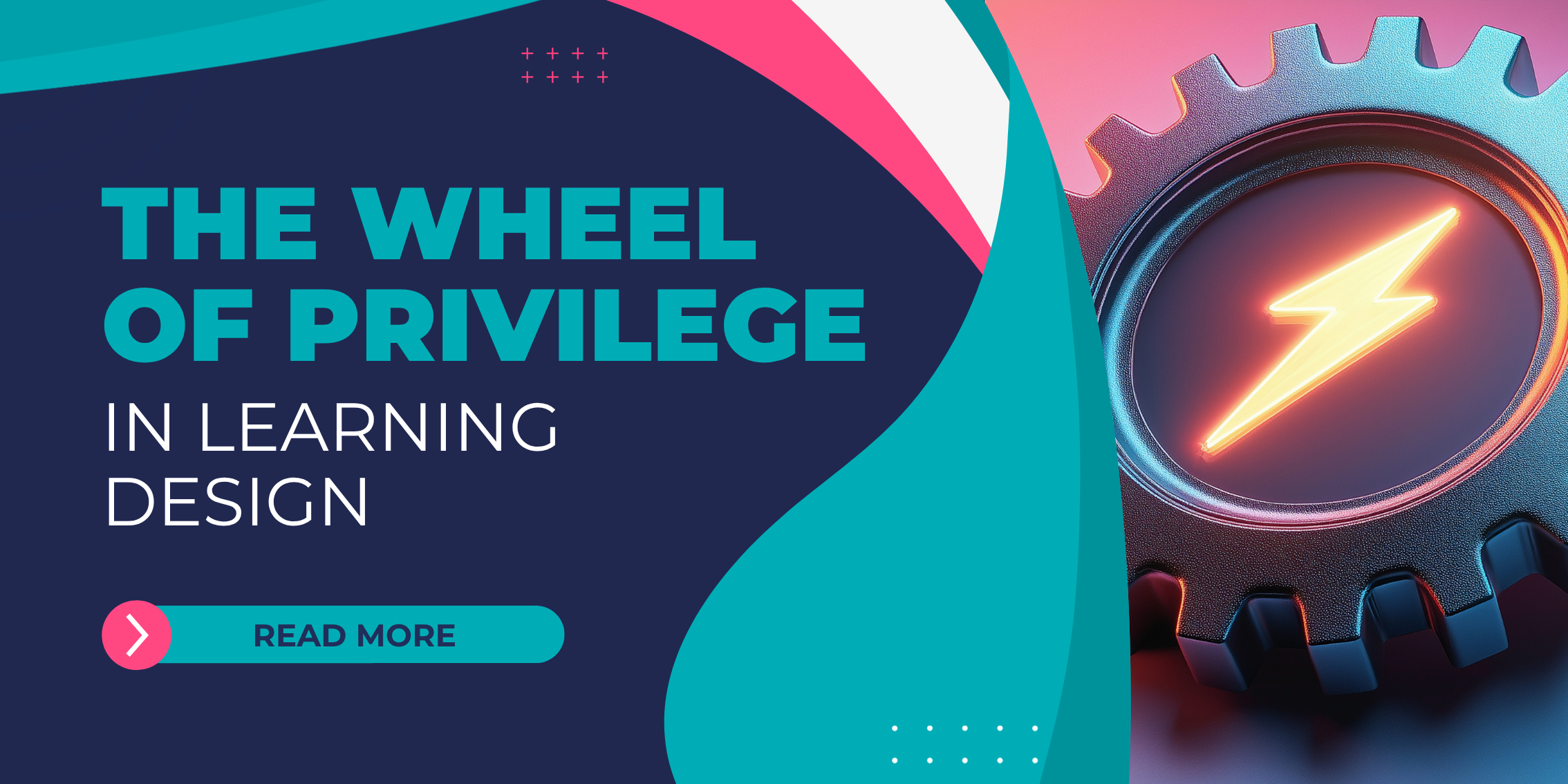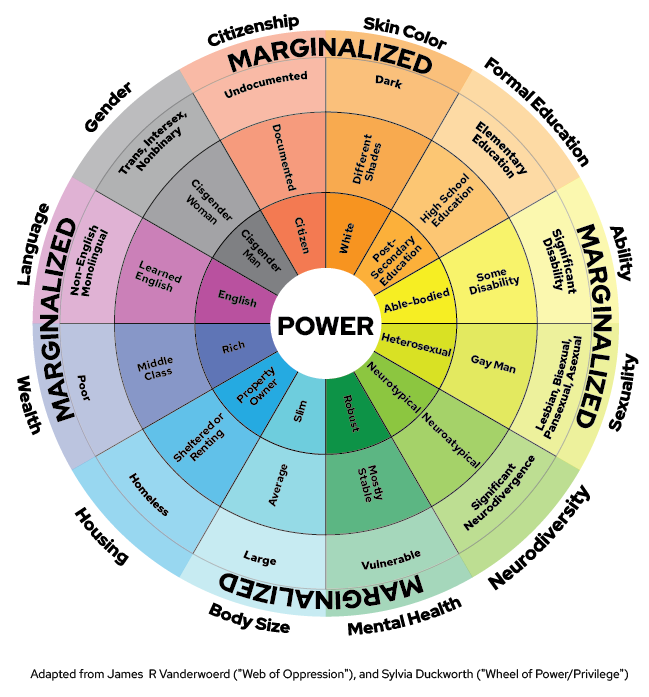
The Wheel of Privilege in Learning Design
By Hajira Shaheen
Let’s start with a thought experiment. Think of a typical workshop you run. There is quite likely a mix of genders and cultural backgrounds. There might be a few hidden disabilities and some hierarchical structures.
Invariably, power and privilege make their way to our workshops and classroom. Often unbeknownst to us. And more importantly, they directly affect the learning of our participants.
Seminal research by Amy Edmonson and others (2016) shows that power structures make it difficult to speak up against the status quo and this reduces opportunities for collaborative learning. Similarly, research around Social Emotional Learning (SEL) has shown that feeling safe is a foundational criteria for learning. Social and emotional learning leads to positive outcomes, including better academic performance, and decreases in stress and anxiety.
So with that in mind, if we led this workshop without considering privilege and power in the room, we might unconsciously design either for the majority or be driven by our own personal context and lived experience. Neither serve our participants.
And so, how can we ensure that we are designing inclusively? One tool to use is The Wheel of Privilege, originally developed by Sylvia Duckworth. The Wheel of Privilege is often used as a tool in Diversity and Inclusion (D&I) conversations and refers to privileges that are cultural, social, legal, and institutional unearned advantages based on certain social groups.
Below is an image of the Wheel of Privilege. The key aspects that add to privilege are citizenship, skin colour, formal education, sexuality, ability, neurodiversity, mental health, body size, housing, wealth, language, and gender.

However, the Wheel of Privilege is also a great framework to use to start thinking about equity in the workshops and the classrooms that we, as learning professionals, often find ourselves in. One of the key steps in learning design is considering your audience - a human centered approach. If inclusive design is about empowering each and every voice in the room, the Wheel of Privilege is a framework through which to apply that inclusive design.
I’d like to propose two ways this can be done. Let’s have a look at both of them.
Privilege of the Participants
This is the more obvious of the two ways we can use the Wheel of Privilege - to gauge the level of privilege and power in the room. There’s often a mix of privilege in the room, and looking at the Wheel of Privilege allows you to gauge the power structures present. Simply being aware of this will help you design a better human centered, inclusive experience that helps put the power back in the hands of the people most on the fringe.
Some questions we can ask to gauge the participant privilege:
- What is the mix of our participants when it comes to ages, genders, cultures, and so on?
- What might be the lived experience of our participants? How would this affect their worldview of the topic you are covering in your workshop?
- What activities and processes can we use to level some of the power structures?
Bringing this to life, let’s look at an example. If you are designing an onboarding program for an organsiation where strong hierarchies exist, there is a strong chance that you will need to do some work upfront in making your participants feel like they belong. In a mixed learning environment like onboarding, there may be the new Head of Marketing in the same room as a front line customer service executive.
One consideration we must have is how we can spend some time connecting the room and the participants with each other. This will ensure the new employees all feel equally empowered to ask questions and are not intimidated by a senior leader in the same room.
Add privileges like gender and certain cultural backgrounds to the mix and we start to see how incredibly important it is to consider this in our work.
Privilege of the Facilitator
The privilege of the facilitator is an interesting way to look at the Wheel of Privilege. It's important to consider the privilege and position we, as learning professionals and facilitators, bring into the room.
Some questions we can ask to gauge the privilege is:
- Where do we sit on the Wheel of Privilege?
- What part of our identity do we bring into the room?
- What part of our identity do our participants view us as?
Bringing this to life, let’s look at an example. Priming through our education systems and certain work experiences already mean facilitators are sometimes seen as the 'sage on the stage' and conversations can be one sided. As an extroverted facilitator, I might want to 'engage' my cohort by encouraging conversations - this often looks like breakout rooms, asking questions of participants in the room etc. However, these might trigger social anxiety in some of our participants, especially if they are neurodivergent or introverted.
However, if we used the Wheel of Privilege and considered our power that comes through position, we might be more conscious and can think of alternate ways of interactions and give people options who engage in different ways.
The Wheel of Privilege has been around for a few years. Allowing its use to evolve in this way to ascertain the level of privilege and position helps us design better. It makes our work more human centered and inclusive. It empowers our learners and improves the learning outcomes for all.
About the Author: Hajira Shaheen

Shaheen is learning professional with a strong inclusive design lens. With a Masters in Learning Sciences and over 13 years experience in learning design and facilitation, Shaheen has worked across a broad range of industries from higher education and consulting to corporates.
Ta’leem Consulting, her social enterprise, focuses on designing inclusive learning and leadership programs, with a view to empower fringe voices in learning and development. She does this through auditing current programs, developing new programs and co-designing experiences to hear and empower every voice in the room.



